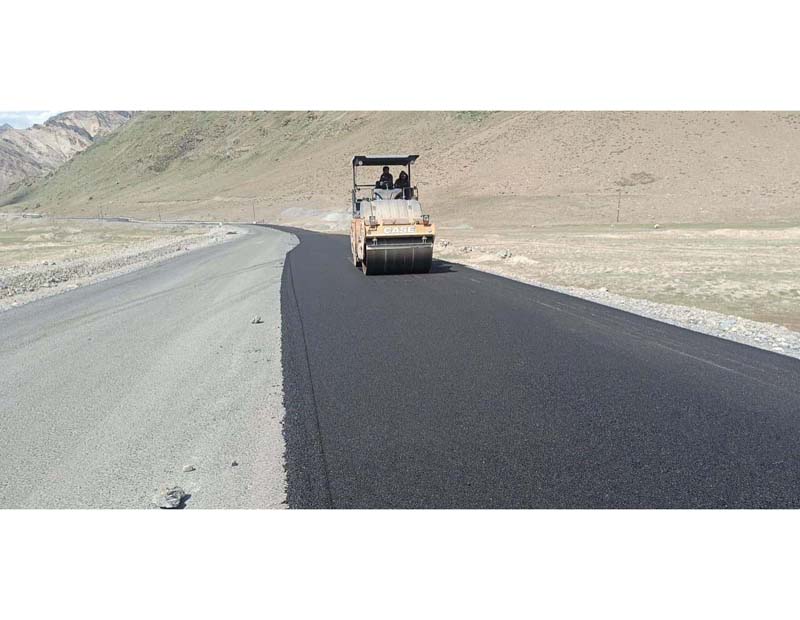
The Ministry of Road Transport and Highways has undertaken the extensive upgrade and widening of the 230-kilometre-long Kargil-Zanskar Road in Ladakh, a critical segment of National Highway 301. Divided into 8 packages, with Package 5 already completed, Packages 6 and 7 are scheduled for completion within this fiscal year. This ambitious initiative is due to the vision and resolve of Prime Minister Narendra Modi to achieve efficient, trouble-free, and environmentally sustainable transportation in the border region. Undertaking the task of widening and constructing an all-weather road is a formidable endeavour. These three packages collectively span a considerable distance, involving the construction of multiple major and minor bridges and hundreds of box culverts. The project encounters significant challenges due to the rugged terrain, which features a deep gorge on one side and steep hills on the other. The harsh environmental conditions in the region, characterised by sparse vegetation, low oxygen levels, and extreme cold, further intensify the complexities of the project. Moreover, more than half of the stretch lacks human habitation and network connectivity, making the logistics of arranging shelter, food, water, and equipment one of the most daunting aspects of the undertaking.
Efforts to improve connectivity in Ladakh extend beyond just road infrastructure, as the railway sector has nearly completed the survey for the Bilaspur-Manali-Leh railway line, spanning almost five hundred kilometres. These projects hold the promise of reshaping regional connectivity and are anticipated to have a substantial impact on transportation in the area. The importance of all-weather connectivity for Ladakh cannot be overstated, given the manifold benefits it brings to the region’s economic, social, and infrastructural landscape. Establishing a reliable and efficient mode of transportation that links various parts of Ladakh to other parts of the country and facilitates the smooth movement of people and goods in and out of the region is imperative. All-weather connectivity holds the potential to attract a significant influx of tourists to Ladakh, as the comfort and accessibility of travel are primary concerns for visitors. This, in turn, will bolster the local economy through tourism-related businesses and the creation of employment opportunities. Ladakh’s remote and challenging geographical terrain calls for a more efficient means of reaching remote areas and connecting isolated communities to larger economic hubs, marking a transformative change. Ultimately, it will drive economic growth in Ladakh by facilitating the movement of goods and raw materials, establishing new trade routes, reducing transportation costs, and enabling businesses to expand their presence in broader markets. The massive construction project is poised to generate significant employment opportunities for residents, offering them a sustainable source of income. This boost in tourism and economic activities will subsequently create more job openings across various sectors. Additionally, the enhanced transportation links will have a positive impact on education and healthcare facilities within the region. It will simplify the movement of students to educational institutions and patients to hospitals outside of Ladakh, particularly for specialised treatments.
Striving for all-weather connectivity in Ladakh is of paramount strategic importance, especially when considering the safeguarding of the region’s territories and addressing the logistical challenges posed by the ongoing tensions with China. Ladakh’s strategic location makes it a critical region for national security, as it shares borders with both China and Pakistan, necessitating a strong defence presence. Improved connectivity will play a pivotal role in enhancing the movement and deployment of military personnel and equipment, enabling quicker responses to security threats. All-weather transportation will guarantee a continuous flow of supplies and personnel, mitigating any disruptions in defence operations. In times of emergencies or security crises, the ability to swiftly mobilise troops and resources becomes imperative. These infrastructure improvements will also yield secondary benefits by bolstering defence logistics and mobility in the region. It will take some time, but these will bring major socio-economic changes to the region.

